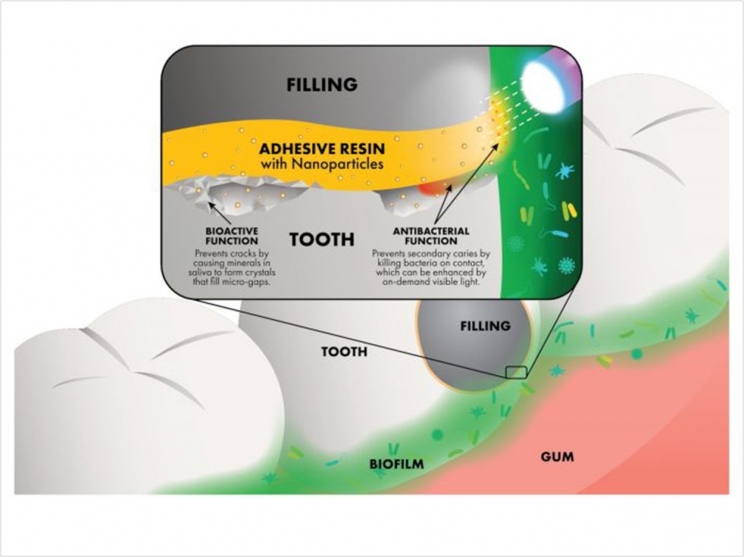
Restorations can be costly, and they don’t last forever, according to the University of Oklahoma College of Dentistry. But researchers there are developing new materials designed to bond more tightly with the enamel structures they’re designed to repair and repel the bacteria that attack fillings and implants, improving durability and reducing costs.
“In fact, the replacement of failed restorations accounts for 70% of dentists’ chairtime at a yearly cost of $298 billion worldwide,” said Fernando Luis Esteban Florez, DDS, MSc, PhD, an assistant professor who is conducting research at the High Flux Isotope Reactor (HFIR) at the Department of Energy Oak Ridge National Laboratory (ORNL).
“Our focus is to create smart restorative dental biomaterials that are less expensive and do not need to be replaced every five to seven years,” said Esteban Florez, adding that neutron scattering research provides insights that may lead to the development of novel materials for implant dentistry.
“A dental implant can cost as much as $4,500 per tooth. And that doesn’t include the cost of repairs should the procedure fail. Therefore, developing biocompatible polymer- or ceramic-based materials to replace those metals could greatly benefit patients,” said Esteban Florez.
“Creating novel materials that are more biocompatible with the human body would be a great asset to dentistry, and neutrons may be the perfect tool for assessing potential materials for this purpose,” he said.
Esteban Florez already has performed neutron scattering experiments at ORNL to explore the surface-modification and functionalization of metal oxide nanoparticles in experimental dental adhesive resins. The nanoparticles have long-term antibacterial and bioactive properties.
Now, he wants to see if neutron scattering can help him better understand exactly how different restorative materials interact with enamel, dentin, and collagen within teeth.
Specifically, he used the IMAGING instrument at HFIR to study a small collection of human teeth that had been restored either with a dental amalgam or with a resin composite. These materials were bound to the sample tooth structures using his experimental dental adhesive resins, which include varying concentrations of metal oxide nanoparticles.
Esteban Florez is now working with Hassina Bilheux, PhD, senior neutron imaging scientist at HFIR, to reconstruct his data into three-dimensional renderings he can use to observe the interactions between restorative dental biomaterials and tooth structures.
“Neutron tomography is a powerful technique for exploring the internal aspects of organic materials such as biological tissues. These samples contain a great deal of hydrogen. And since neutrons are particularly sensitive to hydrogen, we can generate very detailed images of their microstructures,” said Bilheux.
“Neutrons can be used to probe structures within organic tissues in a nondestructive way and allow me to understand how restorative dental biomaterials interact with the entire tooth system,” said Esteban Florez.
Esteban Florez said his research is focused on the development of polymer-based restorative materials with non-leaching and long-term antibacterial and bioactive properties that can be enhanced using visible light irradiation.
Once fully developed, these materials hold the promise to kill penetrating bacterial, naturally bond to organic and inorganic components of teeth, and guide the growth of hydroxyapatite to seal the tooth/biomaterial interface, the researchers said.
If successful, these materials will increase the durability of current polymer-based restorative materials and decrease oral healthcare costs, the researchers said.
“There’s still a great deal of research to be done on this topic, but we’re hopeful that our work will have a significant and positive impact on the field of restorative dentistry,” Esteban Florez said.
Related Articles
Antibacterial Nanoparticles Improve Adhesive Resins
Bioactive Materials Use Bioglass to Promote Long-Term Restorations
Temporary Cement Boasts Strong Retention and Secure Adhesion











